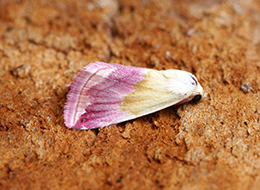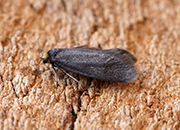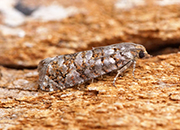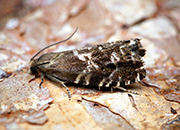I ran the trap last night again at where I work, there were just 3 moths to be found in and around the trapping area, hardly ground-breaking for the end of March, a light frost, bright moon and just 1c was probably responsible for this.
But, one moth caught my eye as I packed away. A rufous-coloured Caloptilia that needed a second look.
I've recorded both betulicola and rufipennella in numbers over the years, but have never seen the Alder feeder, elongella. This is hardly surprising, as Alder isn't a very prolific species of tree in Herts. Alder is mostly found in the damper valleys and therefore wetland species tend to usually be confined to these areas (Although on warm muggy summer nights they have a tendency to disperse, for example Silky Wainscot and Bulrush Wainscot have been recorded in my garden before, which is nowhere near any suitable habitat).
Speaking with Graeme Smith, and a look at the differences between the three, the moth does indeed appear to be my first elongella.
rufipennella was instantly ruled about because of the legs. The next bit to look at is the triangular section underneath the legs called the 'trochanter' this is white or off-white in betulicola. In elongella it is the same colour as the ground colouration of the moth itself, mine is very much the latter.
The British Caloptilia genus currently stands at 13 species, with honoratella added to the British list in 2019. I was lucky enough to record this new to Hertfordshire last year.
I have therefore recorded 12 species of Caloptilia here now, the missing species is probably a common moth for some of you out there... azalleella! One day maybe..
 |
| Caloptilia elongella |
 |
| Caloptilia elongella |

 Musotima nitidalis
Musotima nitidalis L-album Wainscot
L-album Wainscot Feathered Ranunculus
Feathered Ranunculus Agonopterix nervosa
Agonopterix nervosa Blossom Underwing
Blossom Underwing Beautiful Marbled
Beautiful Marbled Lampronia fuscatella
Lampronia fuscatella Gravitarmata margarotana
Gravitarmata margarotana Perittia obscurepunctella
Perittia obscurepunctella Black-spotted Chestnut
Black-spotted Chestnut Cydia pactolana
Cydia pactolana













.JPG)

































